1. Prophylaxis
1.1. Acute RespiratorySyndrome
1.1.1. Pre-exposure
1.1.1.1. Not recommended outside of clinical trials
1.1.2. Post-exposure
1.1.2.1. Not recommended outside of clinical trials
1.1.3. Testing
1.1.3.1. No recommended test for Asymptomatic or Presymptomatic
2. Illness Cateogories
2.1. Asymptomatic or Presymptomatic Infection
2.1.1. Has
2.1.1.1. Positive Test
2.1.2. Lacks
2.1.2.1. Any Symptoms
2.1.2.1.1. Exceptions (Few Cases)
2.2. Mild Illness
2.2.1. Has
2.2.1.1. fever, cough, sore throat, malaise, headache, muscle pain
2.2.2. Lacks
2.2.2.1. SOB, dyspnea, or abnormal imaging
2.3. Moderate Illness
2.3.1. Has
2.3.1.1. Clinical Assessment/Imaging: lower respiratory disease
2.3.1.2. (SaO2) >93% RA (sea level)
2.4. Severe Illness
2.4.1. Has
2.4.1.1. RR >30 breaths/minute
2.4.1.2. SaO2 ≤93% RA (sea level)
2.4.1.3. (PaO2/FiO2) <300
2.4.1.3.1. "arterial partial pressure of O2 / inspired oxygen"
2.4.1.4. Lung infiltrates >50%
2.5. Critical Illness
2.5.1. Has
2.5.1.1. Respiratory Failure
2.5.1.2. Septic Shock
2.5.1.3. Multiple Organ Dysfunction
2.6. Illness Cateogories
2.6.1. Asymptomatic or Presymptomatic Infection
2.6.1.1. Has
2.6.1.1.1. Positive Test
2.6.1.2. Lacks
2.6.1.2.1. Any Symptoms
2.6.2. Mild Illness
2.6.2.1. Has
2.6.2.1.1. fever, cough, sore throat, malaise, headache, muscle pain
2.6.2.2. Lacks
2.6.2.2.1. SOB, dyspnea, or abnormal imaging
2.6.3. Moderate Illness
2.6.3.1. Has
2.6.3.1.1. Clinical Assessment/Imaging: lower respiratory disease
2.6.3.1.2. (SaO2) >93% RA (sea level)
2.6.4. Severe Illness
2.6.4.1. Has
2.6.4.1.1. RR >30 breaths/minute
2.6.4.1.2. SaO2 ≤93% RA (sea level)
2.6.4.1.3. (PaO2/FiO2) <300
2.6.4.1.4. Lung infiltrates >50%
2.6.5. Critical Illness
2.6.5.1. Has
2.6.5.1.1. Respiratory Failure
2.6.5.1.2. Septic Shock
2.6.5.1.3. Multiple Organ Dysfunction
3. Triage
3.1. Asymptomatic or Presymptomatic Infection
3.1.1. Non-Healthcare Workers
3.1.1.1. If Testing Positive: Self-Isolate
3.1.1.1.1. If Asymptomatic for 7 days, discontinue isolation
3.1.1.1.2. If Symptomatic within 7 days, contact primary care physician
3.1.1.2. If Testing Negative: Proceed as Normal
3.1.2. Healthcare Workers
3.1.2.1. If Testing Positive: Contact Occupational Health Service
3.1.2.2. If Testing Negative: Proceed as Normal
3.2. Mild Illness
3.2.1. Most Patients Without Risk Factors
3.2.1.1. Ambulatory Setting Management
3.2.1.2. Home
3.2.1.2.1. Telemedicine
3.2.1.2.2. Remote Visits
3.2.1.3. Insufficient Evidence for or against:
3.2.1.3.1. Immunomodulatory Therapy
3.2.1.3.2. Antiviral Therapy
3.2.2. Most Patients Without Risk Factors
3.2.2.1. Admit to Inpatient Healthcare Facility
3.2.2.1.1. Close Observation
3.2.2.2. Insufficient Evidence for or against:
3.2.2.2.1. Immunomodulatory Therapy
3.2.2.2.2. Antiviral Therapy
3.3. Moderate Illness
3.3.1. Admit to Inpatient Healthcare Facility
3.3.1.1. Close Observation
3.3.1.1.1. Suspected Pneumonia or Bacterial Sepsis
3.3.1.2. Insufficient Evidence for or against:
3.3.1.2.1. Immunomodulatory Therapy
3.3.1.2.2. Antiviral Therapy
3.3.1.3. Therapeutic Options
3.4. Severe Illness
3.4.1. Admit to Inpatient Healthcare Facility
3.4.1.1. May experience rapid clinical deterioration
3.4.1.2. Will likely need to undergo aerosol-generating procedures
3.4.1.2.1. Use negative pressure room
3.4.1.2.2. Use high-flow nasal cannula
3.4.1.3. Suspected Pneumonia or Bacterial Sepsis
3.4.1.3.1. Antibiotic TX for C.A.Pneumonia
3.4.1.4. Evaluation
3.4.1.4.1. Pulmonary Imagining
3.4.1.4.2. Labs
3.4.1.5. Insufficient Evidence for or against:
3.4.1.5.1. Immunomodulatory Therapy
3.4.1.5.2. Antiviral Therapy
3.5. Critical Illness
3.5.1. May be associated with...
3.5.1.1. CNS Disease
3.5.1.2. Renal System Disease
3.5.1.3. Acute Respiratory Distress Syndrome
3.5.1.4. Septic Shock: Possibly from...
3.5.1.4.1. virus-induced distributive shock
3.5.1.4.2. cardiac dysfunction
3.5.1.4.3. cytokine storm
3.5.1.4.4. exacerbation of underlying comorbidities
3.5.1.5. Pulmonary Disease
3.5.1.6. Hepatic System Disease
3.5.2. Will likely need to undergo aerosol-generating procedures
3.5.2.1. Use negative pressure room
3.5.2.2. Use high-flow nasal cannula
3.5.3. There is limited information to suggest that management should differ substantially from other critical patients
3.5.4. Insufficient Evidence for or against:
3.5.4.1. Immunomodulatory Therapy
3.5.4.2. Antiviral Therapy
4. Treatment
4.1. Antivirals
4.1.1. NOT RECOMMENDED
4.1.1.1. hydroxychloroquine with azithromycin
4.1.1.1.1. Potential Toxicities
4.1.1.2. Lopinavir/ritonavir & HIV protease inhibitors
4.1.1.2.1. unfavorable pharmacodynamics
4.1.1.2.2. negative clinical trial data
4.1.2. Insufficient Data: For or Against
4.1.2.1. chloroquine
4.1.2.1.1. Monitor for...
4.1.2.2. hydroxychloroquine
4.1.2.2.1. Monitor for...
4.1.2.3. remdesivir
4.1.2.3.1. currently being investigated
4.2. Host Modifiers: Immune-Based Therapy
4.2.1. Insufficient Data: For or Against
4.2.1.1. hyperimmune immunoglobulin
4.2.1.2. convalescent plasma
4.2.1.3. Interleukin-6 inhibitors
4.2.1.4. Interleukin-1 inhibitors
4.2.2. NOT RECOMMENDED
4.2.2.1. Interferons
4.2.2.2. Janus kinase inhibitors
